I am using ARC software with 2 iotinys controller, 2 EzB4 controllers - 3 EZ-ROBOT 1300 lithium batteries for the four Ez 360 HDD servos for the two arms, two 996R servos for the grippers, 2 DFRobot rotation hex bases for head movement and body movements. with 2 EZ-robot servos HDD, 2 RGB for the eyes - EZ-Robot HDD servo and moving camera - still need a mouth
from servo City: 4 gearboxes , channels, parts, extensions, Prowler Robot Kit (wheels, 4 motors, h-bridge pwm motor controller
Video will be coming of all movementsHere is a sample video
EzAng
By EzAng
— Last update
Other robots from Synthiam community
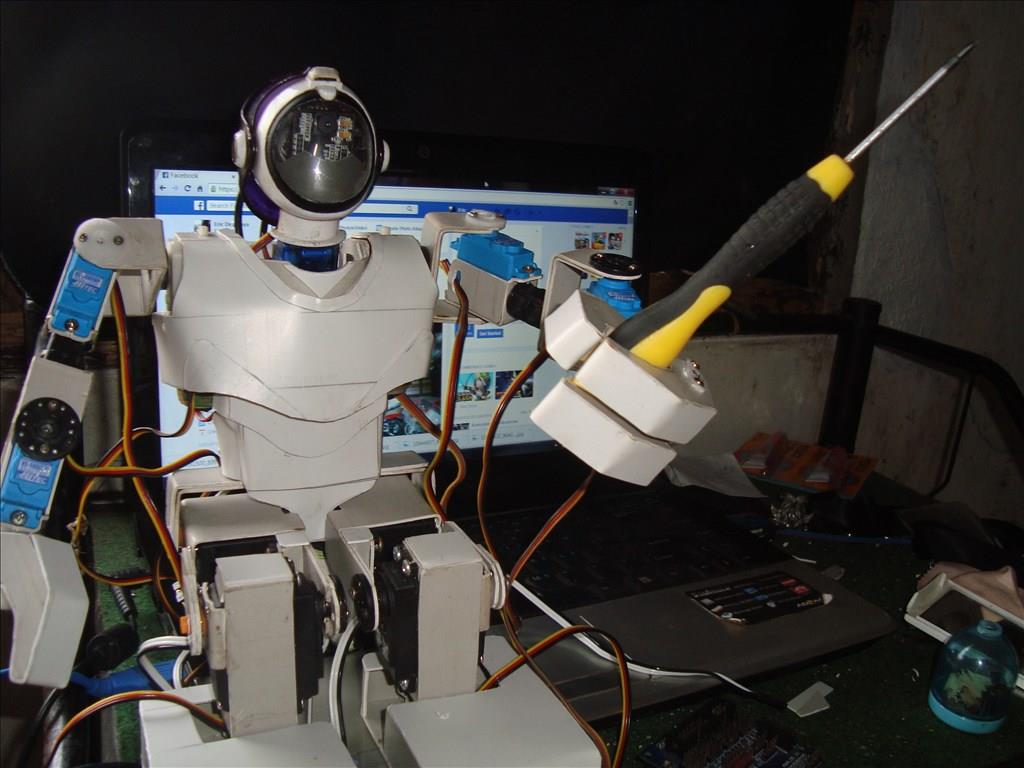
Ericez's New Friend For Jd, Lita My Humanoid Robot Made From...
image gallery Hello All, I am getting ez develover time ago. in fact it will I use for real size wall...
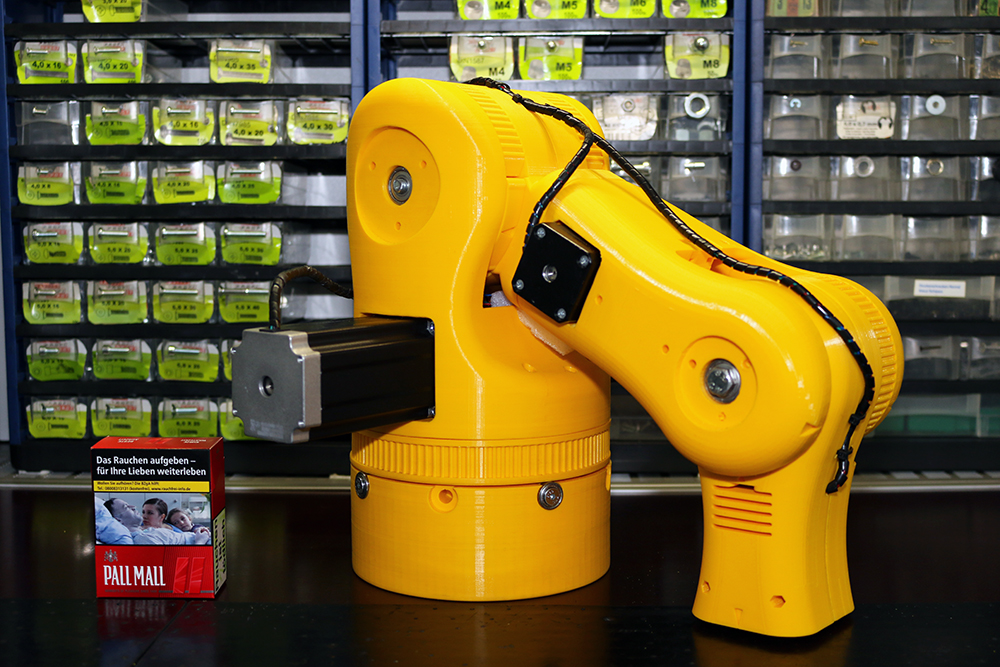
Rentaprinta's Moveo Project
Hi! I want to show some pictures from my new project "Moveo"...
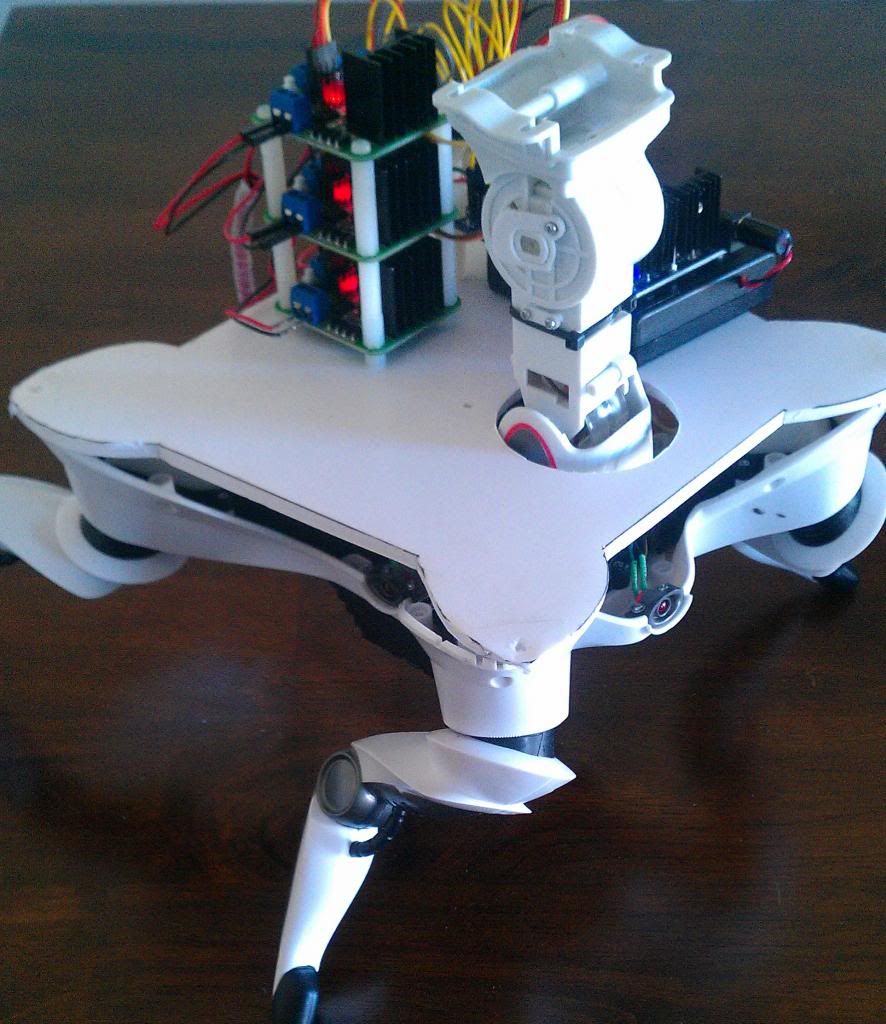
Leversofpower's Roboquad Redux
The Wowee Roboquad had a labotomy and now it's getting the hack de jour put to it... No remotes, IR codes, waiting,...

















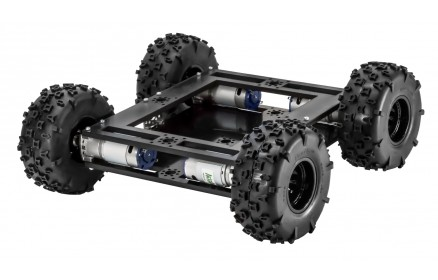
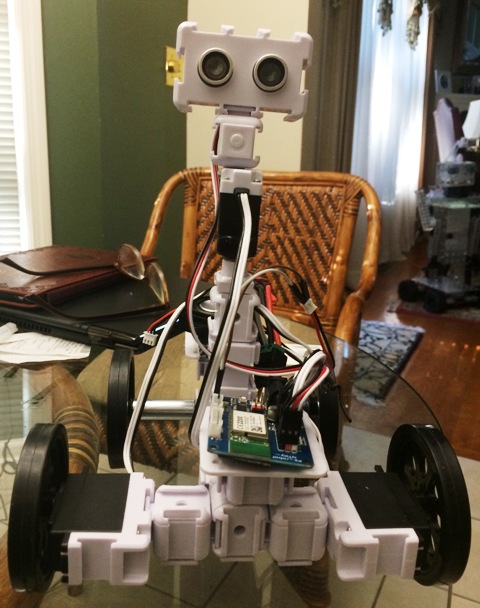
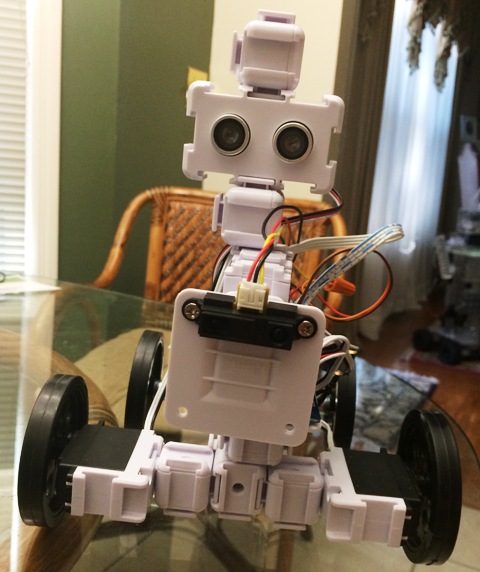
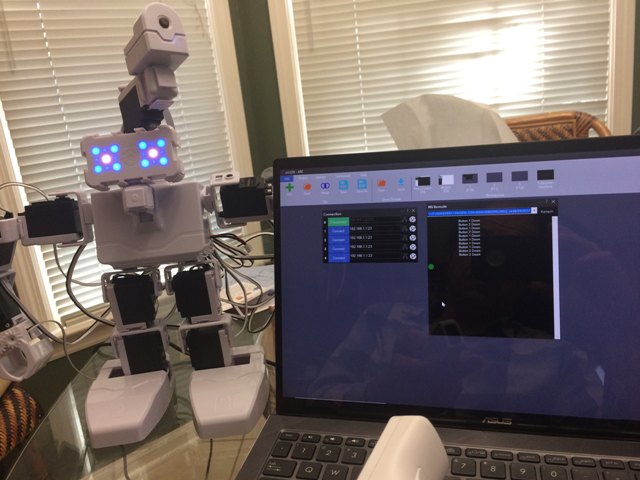
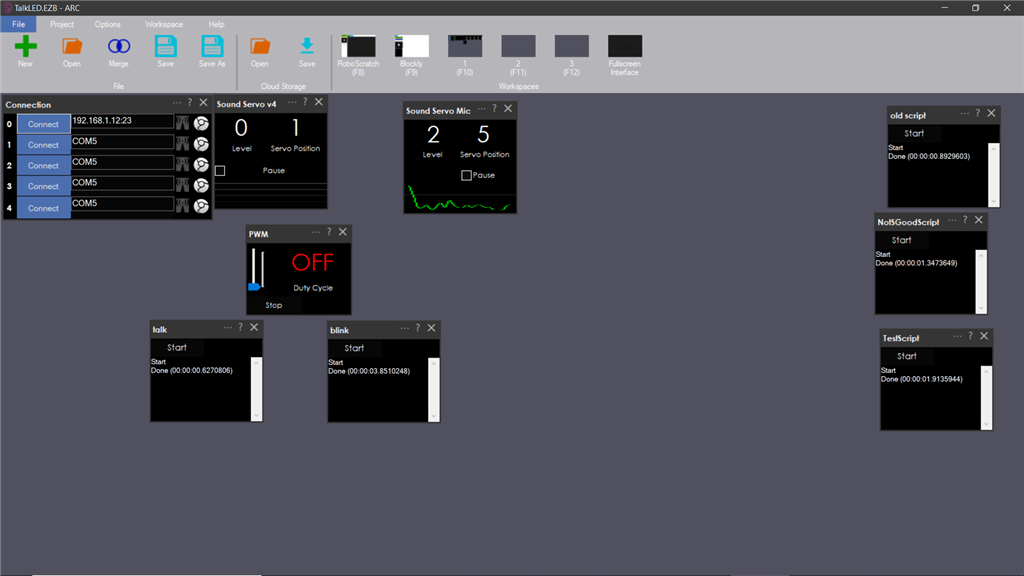
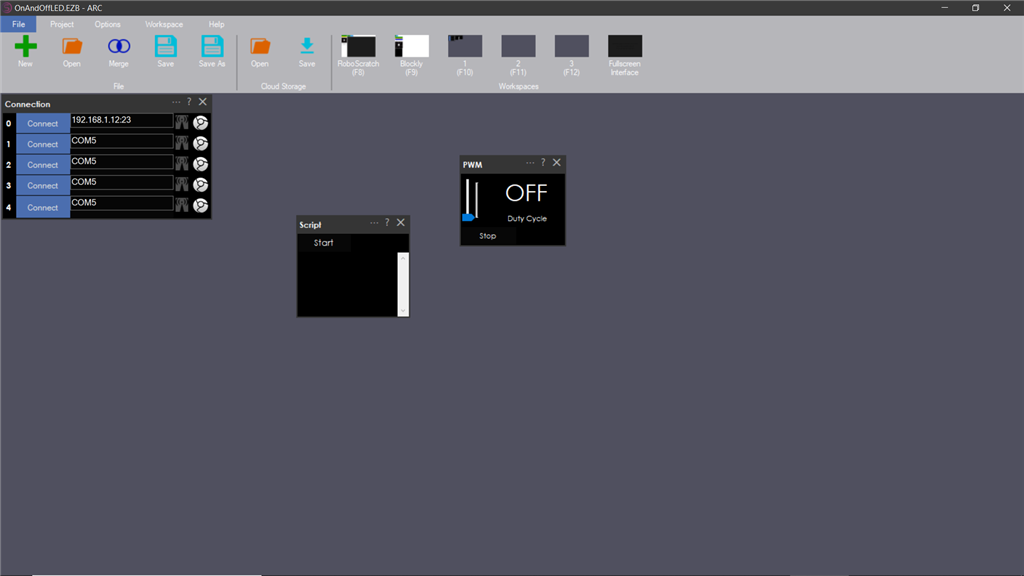
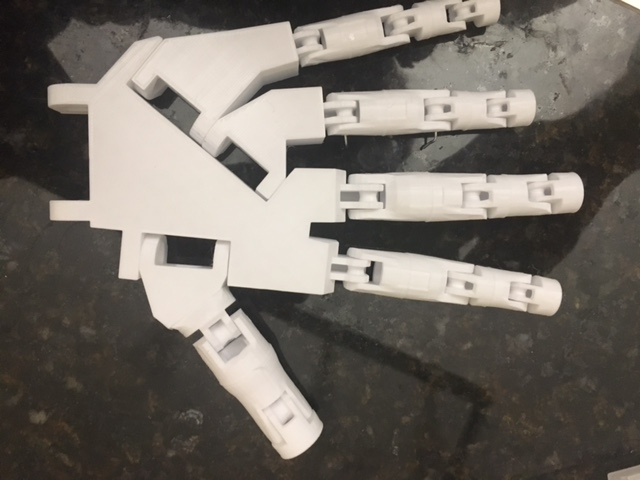
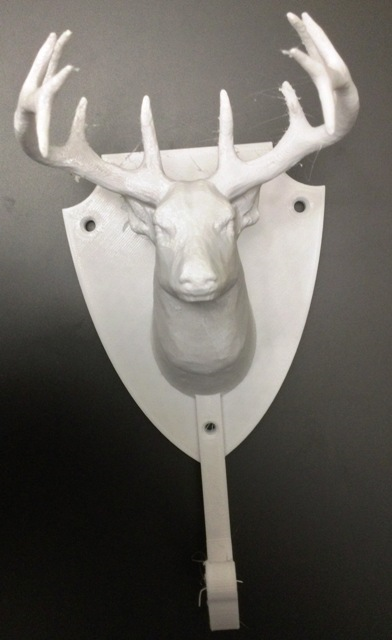
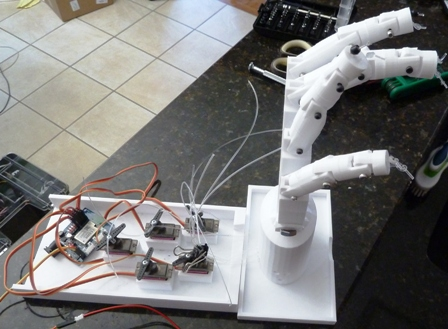

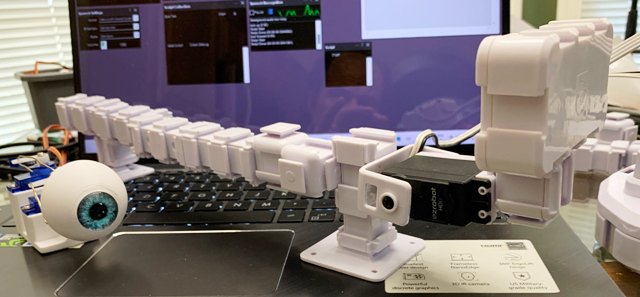
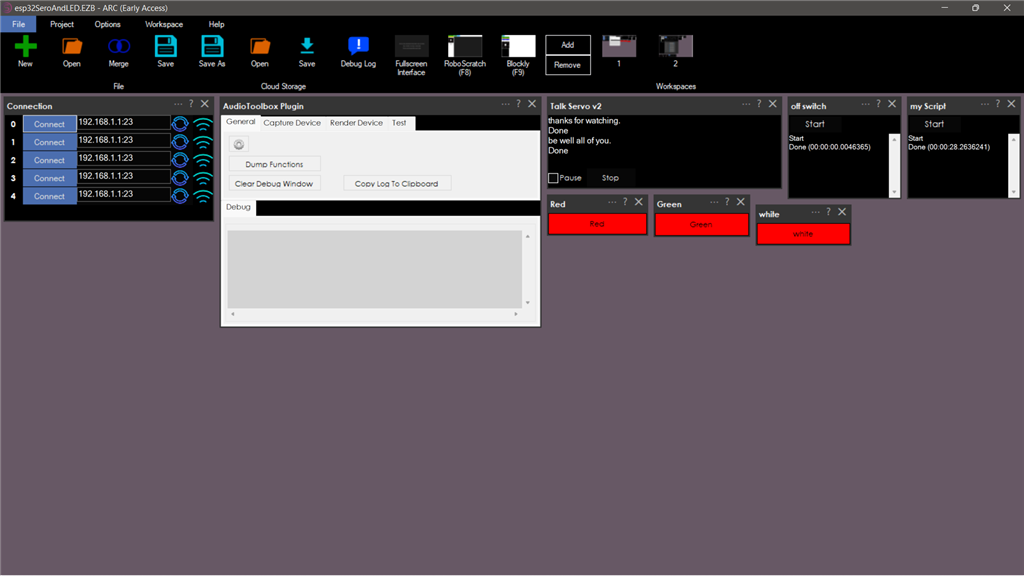
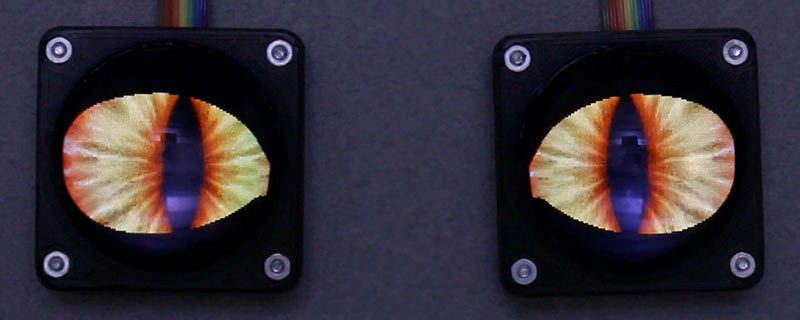
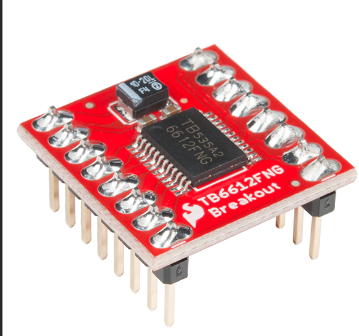
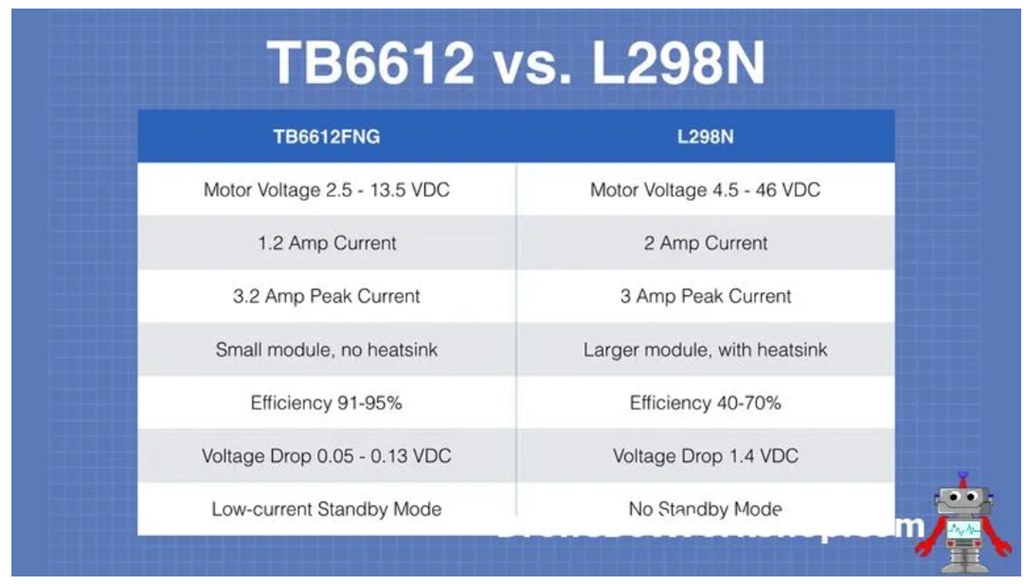
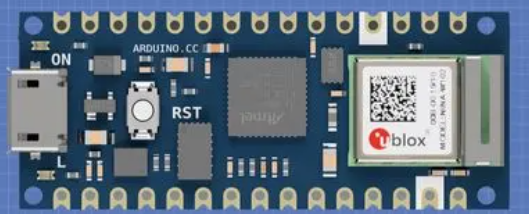
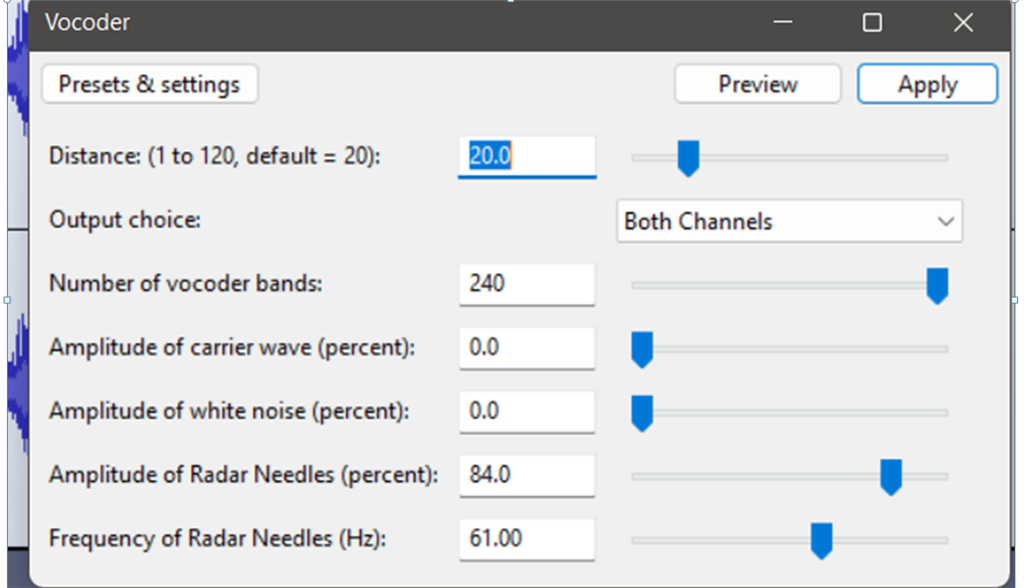
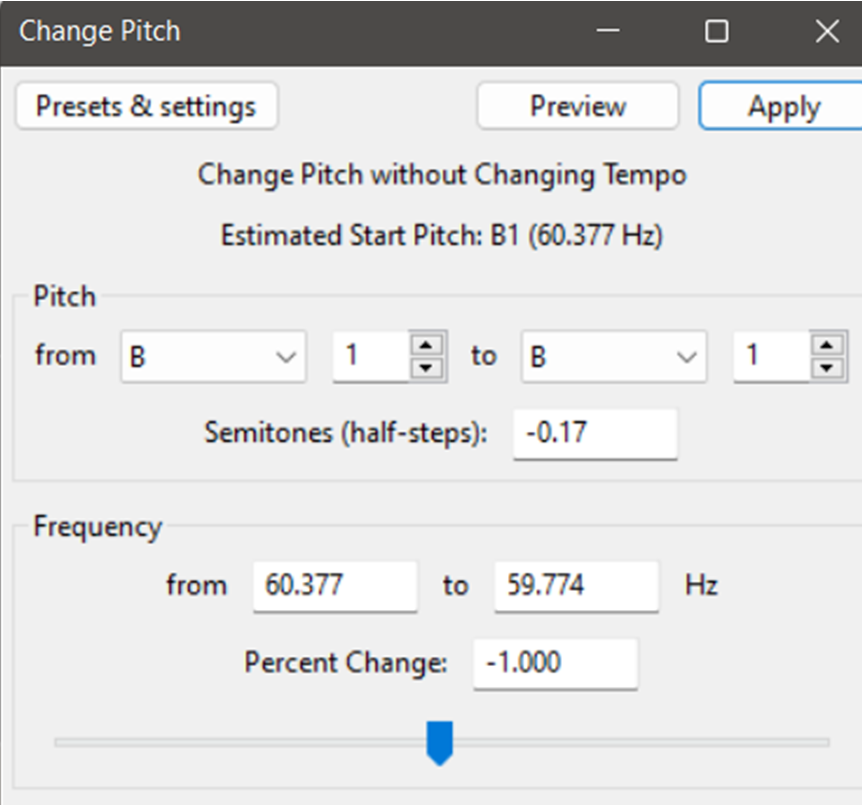
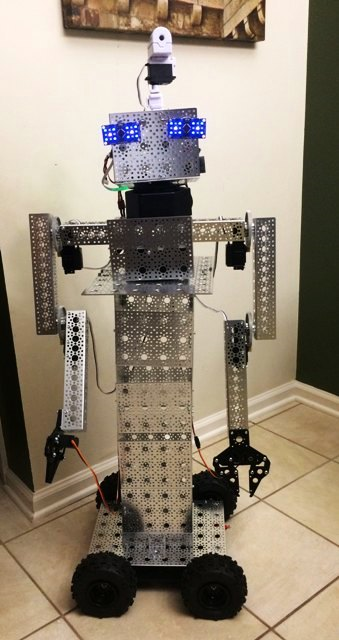

Hey Nomad,
Thanks for always commenting on my work and time, I do appreciate it.
My robot - https://youtu.be/wcYgtyJCnvY
I used: the Talk servo V2, fine tuning all the adjustments audio toolbox for different voices and script Script for the audio 5 LEDs small servo for mouth, wires, tape, EZB4 controller, ARC, servo city parts for stand, mask, cut for the mouth
For your DC motor hobby cars: from https://dronebotworkshop.com/tb6612fng-h-bridge/
good info - https://dronebotworkshop.com/dc-motor-drivers/
Just thought I would pass along a replacement for the L298N H bridge
It is the TB6612FNG H-Bridge from Sparkfun
If you have a motor that requires over 13.5 volts then that eliminates the TB6612FNG. However, if your motor is a low-voltage (i.e. 3-volt) device then the L298N is out of the picture.
Although the L298N can handle almost twice the continuous current that the TB6612FNG does, it is about even when it comes to peak current, in fact the TB6612FNG has a slight edge.
But after that the TB6612FNG is the clear winner.
It is much smaller, in fact, most TB6612FNG modules are less than a quarter of the size of L298N modules. No heatsink, making it even smaller. However, it is a good idea to allow some airflow around the device. The efficiency is where the TB6612FNG really shines. There really is no contest here, something to strongly consider when building a battery-powered device. Virtually all of your motor supply voltage will get to the motor when you use the TB6612FNG. The L298N will drop 1.4-volts, as it uses BJTs. The TB6612FNG has a low-current standby mode that the L298N does not have.
I just noticed the new:
The Arduino Nano 33-IoT board. This low-cost module features a powerful 32-bit processor, integrated WiFi and Bluetooth, and IMU (Inertial Measurement Unit), and onboard RTC (Real Time Clock).
ordered one
Great robot voice
Audacity
that's it